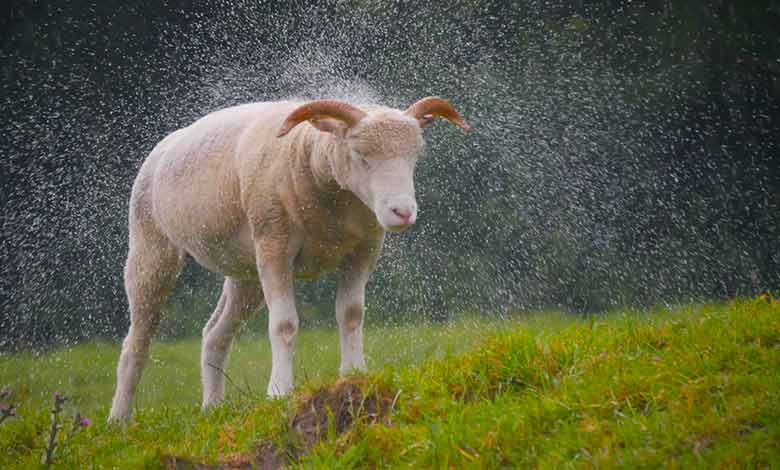
A wool sweater through the laundry shrinks. But why don’t sheep shrink in the rain? It is all about friction. Wool fibers are covered in overlapping scales that run the length of each fiber. These scales make it easier for the fiber to slide in one direction. This one-way resistance becomes problematic when a wool sweater gets thrown into the washing machine and tossed around.
As each fiber rubs against its scales, it acts like little ratchets. It only allows the fiber to move in one direction. The water worsens by causing the fibers to swell, bringing them closer to contact. By softening the scales, they become floppy enough but not so floppy that they can give way and allow the fibers to move past each other.
Why don’t sheep shrink when it rains? (Wool Facts)
Here are a few reasons why sheep’s wool may seem to change when wet:
Absorption of Water: Wool has a high capacity to absorb water. When it rains, the wool fibers can soak up moisture, becoming heavier and sagging due to the added weight. This can make the sheep’s fleece appear compressed or flattened.
Loss of Loft: Wool fibers have natural crimps and scales, giving them volume and loft when dry. When the wool becomes wet, the scales can become temporarily flattened, reducing the natural loft and making the wool appear more compact.
Matting and Clumping: Wet wool tends to clump together and become matted. The fibers can stick together, especially if the sheep’s fleece is dirty or contains natural oils. This matting can make the wool appear denser and less fluffy.
The structure of wool also complicates things. It has little jagged structures called cuticles all over its surface. They like to latch onto things like other wool fibers. The cuticles don’t bother the sheep. They hold the fiber to stay attached to its skin but turn them into the fabric.
When sheep get caught in the rain, the fibers in their thick coats swell, and their scales soften too. As a result, their wool doesn’t get tossed around enough for the ratchet effect to cause it to tighten. Heat also exacerbates the ratchet effect. Throughout the wash and dry cycle, the millions of tiny ratchets on the thousands of individual fibers in the wool sweater draw the fabric into a tighter and tighter configuration. As a result, it shrinks the overall size of the sweater.
- The shrinking of woolen clothes results from a process known as felting.
Wool is made up of amino acids and protein’s building blocks. Like human hair or fingernails, wool that grows on a sheep is keratinized, meaning hardened. Wool fibers on a sheep have flat, overlapping scales pointing away from the sheep’s body. However, when these fibers get processed and turned into clothes, they get stretched out, and the scales can then point in any random direction as it all gets mixed up.
When we wash clothes, the fibers start rubbing against each other. The scales touch and often interlock. It does not allow the fibers to slide back to their original position. Imagine hundreds of fibers doing this. That’s called felting. That’s why you end up with a smaller cloth that looks shrunk.
As sheep have unprocessed wool on their bodies, the scales in the fiber are all pointing in the same direction. This means they don’t get tangled and interlocked in one place. No felting, no shrinking. Furthermore, wool on sheep is almost unrecognizable if you compare it to the fiber in our clothes. Their wool is covered in dirt, sweat, field debris, and whatnot. All of this comprises around 70 percent of the raw wool’s weight.
Sheep also produce a natural oily substance called lanolin. It covers their coats, acting as a lubricant, preventing fibers from locking together. Also, it repels water, so sheep are more or less waterproof.
For the same reason, dogs, cats, and humans with a lot of hair don’t shrink when wet in the rain. Again, it is because the fibers all run in the same direction.
More Articles:
The Reasons Of Why Clothes Shrink In Wash?

